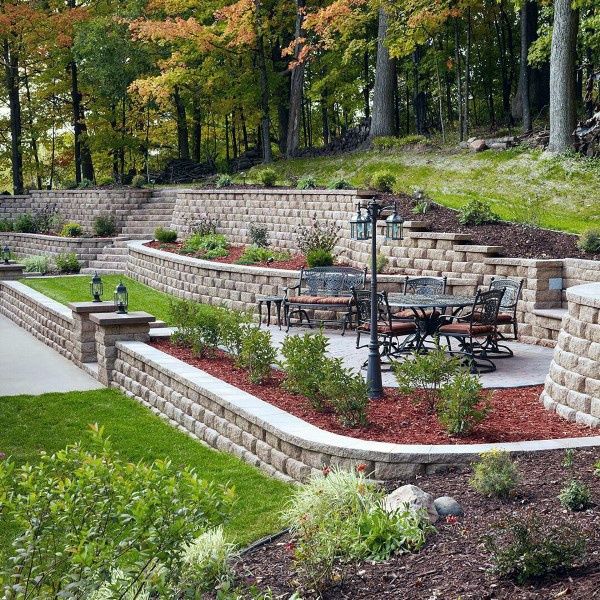There are many types to choose from when it comes to retaining wall constructions. Each type of retaining wall structure can be used for a different purpose. Gravity walls, also known as crib retaining walls, are constructed using a grid-like structure with a base made of pre-cast concrete and crushed stone. Crib retaining wall are ideal for supporting planters, but they aren’t the best choice to hold back large amounts of soil. Gabion retaining wall are made of large stones, held together by a wire mesh. They are great for areas with erosion. Counterfort walls require additional support at the back.
retaining walls
Although most people know the basic principle behind retaining walls, which is that they are freestanding structures that resist soil movement, it’s actually more complicated than that. Retainingwalls are designed to hold back soil without causing it to slump. They’re designed to support the desired change of ground elevation, called the angle or repose. Here are some examples of retaining walls:
Counterfort walls

Counterfort walls are similar in appearance to cantilever walls. However, they have a vertical concrete Web that ties the slab together. These webs add weight and stability to the wall and provide resistance to shear and bending forces. They can either be precast or made on site.
These structures are cost-effective up to 10 m high. These structures require less concrete than gravity walls, but must be aware of sliding pressures. If you have a large project that will require a tall retaining walls, it is best to consult a professional.
Another common type of retaining wall is sheet pile walls. Sheet pile walls use a sheet of metal that is driven deep into ground. These walls are supported by the piles and the counter-force keeps it from tipping. These retaining walls can be either temporary or permanent depending on their design. Pile retainingwalls are an excellent choice for projects that require a strong barrier.
Timber retaining walls look great and are easy to put up. They have good structural integrity and can last for up to fifteen years. Timber walls have a few drawbacks. They require a lot more drainage. They also require a skilled mason to install them properly. The downside to using timber retaining wall is that they can’t be combined with other materials. A brick or concrete retaining wall might be the best choice if you are looking for a minimalist, modern look.
The cantilever is another type retaining wall. It can be built on-site or prefabricated. It has a stem that extends over and below the backfill. This wall requires less concrete than a gravity one. It is important to remember that cantilevers can be flipped over and slid. The gabion wall, made up of a steel mesh, is another type.
Retaining walls are a great way to enhance the aesthetic appeal of your home. Be sure to plan your project carefully before you begin work. Before you start installing a retainingwall on your property make sure you review the specifications for each type. For commercial properties, it is essential to select the best geosynthetics in order to get the maximum benefit from your retaining walls.
Gravity retaining walls rely on sheer weight to hold soil back. The material is relatively light and can be made out of bricks, pavers, dry-stacked or even concrete. Gravity retaining walls don’t require any reinforcements and may be made of concrete. Some walls may require a concrete footer, however, for shorter walls. They are often made with segmented concrete units. The best
part? The material can be used for creating stairs, curves, and any other custom features.
Anchored retaining walls are another type of retaining wall. Anchored walls are the strongest retaining wall type. However, unlike other types, these structures don’t require much space. They are great for smaller spaces and soft earth. They are the best choice whether you need them to retain heavy loads or add visual interest to a thin wall.
Commercially-built cantilever retaining walls use a stem-like structure to resist lateral earth pressures. The concrete stem is embedded in the soil to act as a weight and prevent the wall’s sliding. A cantilever wall can reach up to 3m in height, but can become too heavy for the ground below and can collapse under its own weight. Cantilever walls are not designed with a gravity retaining wall. Instead, they have an L or inverted-T-shaped foundation. The heavy back-fill can stabilize the structure and prevent it from toppling.

